
Original link in Chinese
Africa, the land of gold nuggets and treasures, here is the most complete strategy!
Speaking of the African market, if you can only think of “poverty”, “hunger” and “backwardness”, then you really underestimate this treasure trove. In the eyes of foreign traders, the African market is a virgin land and a blue ocean of foreign trade. In recent years, the continuously younger population structure has made Africa’s demographic dividend continue to improve, and the rapid urbanization process has also gradually optimized the business environment. Its huge market potential is the key words of the African market at this stage.
As former South African President Mandela mentioned at the opening ceremony of the Johannesburg Summit of the Forum on China-Africa Cooperation—“We are standing at the dawn of the African century, in which Africa will occupy the right place in the forest of the world.” There is a place.”
As one of the fastest growing economies in the world, the development of the African e-commerce market is also booming. What opportunities can Chinese export companies seize from this vast blue ocean?
Today, Maomao will walk into the treasure land of Africa together with you!
current catalog
1. Overview of Africa and China-Africa Trade Status
2. Overview of African e-commerce market
3. African countries worth developing
4. African market development strategy
5. Characteristics of African customers
6. How to make an order with African customers
1. Overview of Africa
1. Geographic location
Africa (English: Africa), the full name of Africa, is located in the western part of the Eastern Hemisphere, spanning the north and south of the equator, with an area of about 30.2 million square kilometers (land area), accounting for 20.4% of the world’s total land area. It is the second largest continent in the world and also the largest population. The second largest continent (approximately 1.286 billion), there are 54 countries and 7 regions.
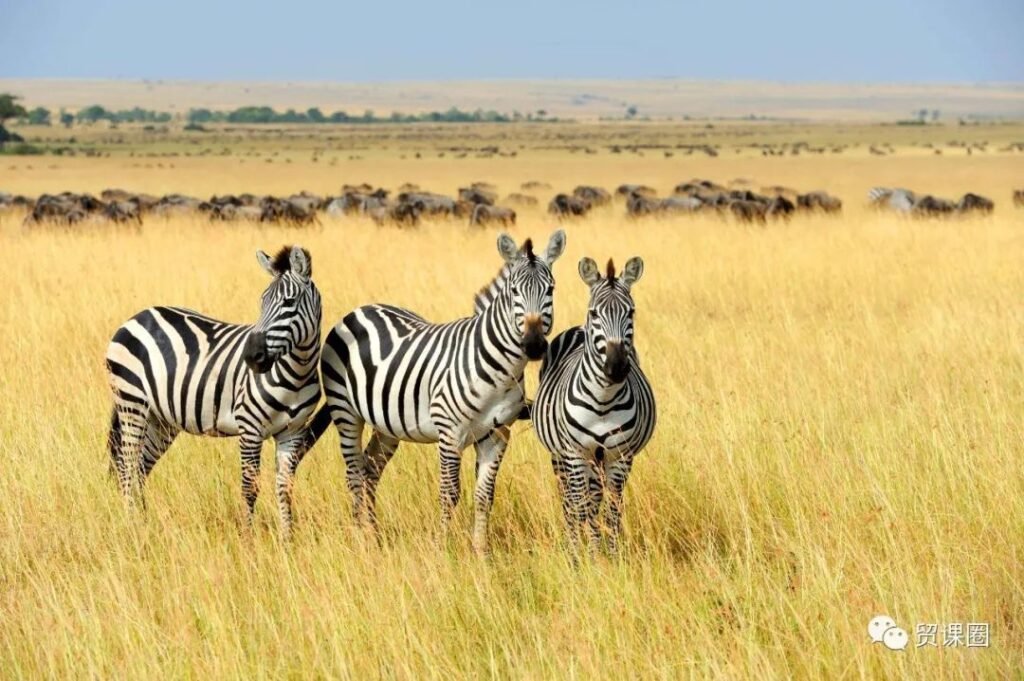
2. Regional division
As one of the birthplaces of ancient human beings and ancient civilizations in the world, Africa has the earliest written records in 4000 BC, and Egypt is one of the birthplaces of world civilization;
At the same time, Africa is also the continent with the highest concentration of developing countries (54 countries are all developing countries, accounting for one-third of the developing countries in the world); there are a total of 47 least developed countries approved by the United Nations in the world, Among them, there are 33 countries in Africa.
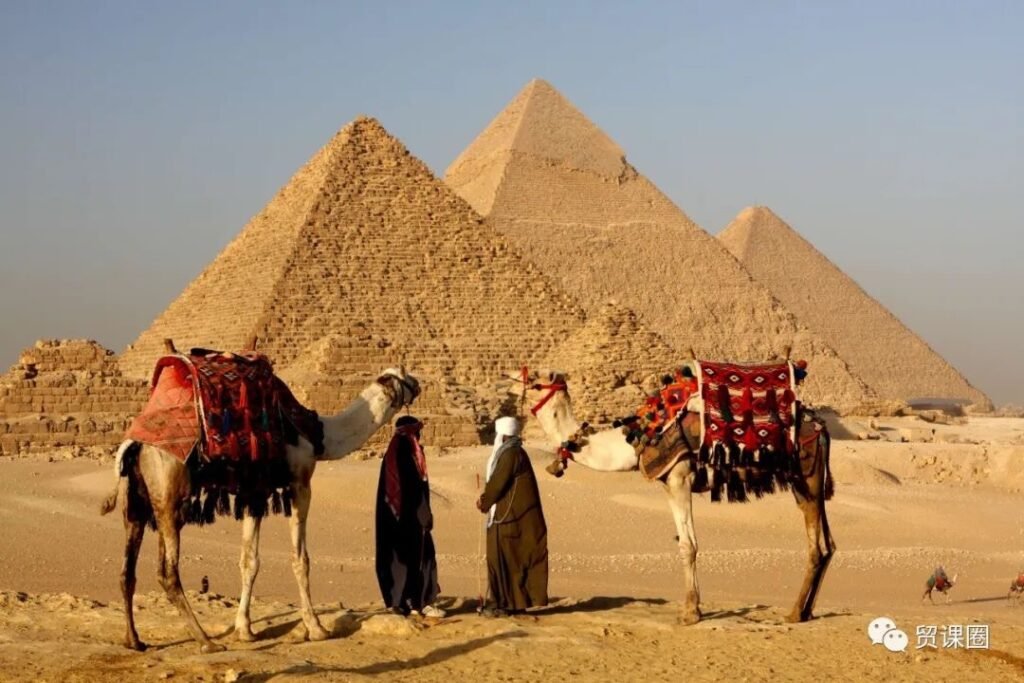
3. Current status of China-Africa trade
Willag Forage, an emerging market economist at Capital International Macroeconomic Consulting, said that despite the recent slowdown in economic growth, trade between China and Africa is still growing at a healthy rate. According to Chinese customs data, in the context of the rapid rise in international raw material prices, China-Africa trade has continued to grow rapidly. In the first half of the year, China-Africa trade volume reached US$137.4 billion, a year-on-year increase of 16.6%. Among them, China exported US$76.8 billion to Africa, a year-on-year increase of 14.7%.
In the first five months of 2022, the trade volume between China and Africa was US$110.868 billion, of which China’s exports to Africa reached US$60.639 billion, a year-on-year increase of 13.4%, and China’s imports from Africa reached US$50.229 billion, a year-on-year increase of 19.5%.
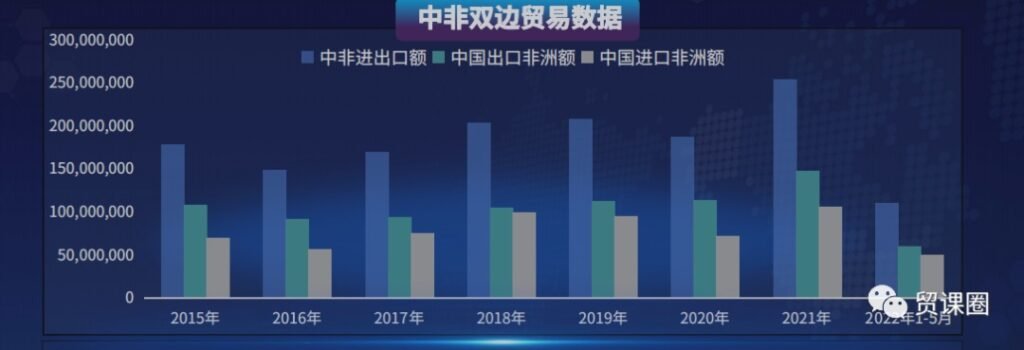
2. Overview of the African e-commerce market
1. With the rapid penetration of the Internet, the average daily usage time of social media exceeds the global average
Although compared with other continents, the scale of Africa’s e-commerce market is relatively small, but its development speed is very fast, especially in recent years, it has entered a period of high-speed explosion. It can be said that while markets in Europe and the United States are in a sea of red, Africa is a rare blue ocean market . According to World Bank statistics , as of June 2022, there are 658 million Internet users in Africa, and the Internet penetration rate is 46.8%.
At the same time, with the increasing popularity of mobile Internet and the decline of mobile phone prices, the penetration rate of social media in Africa is also increasing. According to Nox data, there will be 375 million social media users in Africa in 2022, accounting for 8.18% of global social media users.

As can be seen from the figure above, although the number of social media users in Africa is lower than that of other continents, its average social media usage time is far longer than that in Asia and other regions. Internet users in Africa spend three hours and 10 minutes a day on social media platforms, second only to South America.
The most popular social media platforms are WhasApp, Facebook, TikTok, etc., with an average usage time of more than 10 hours per month.
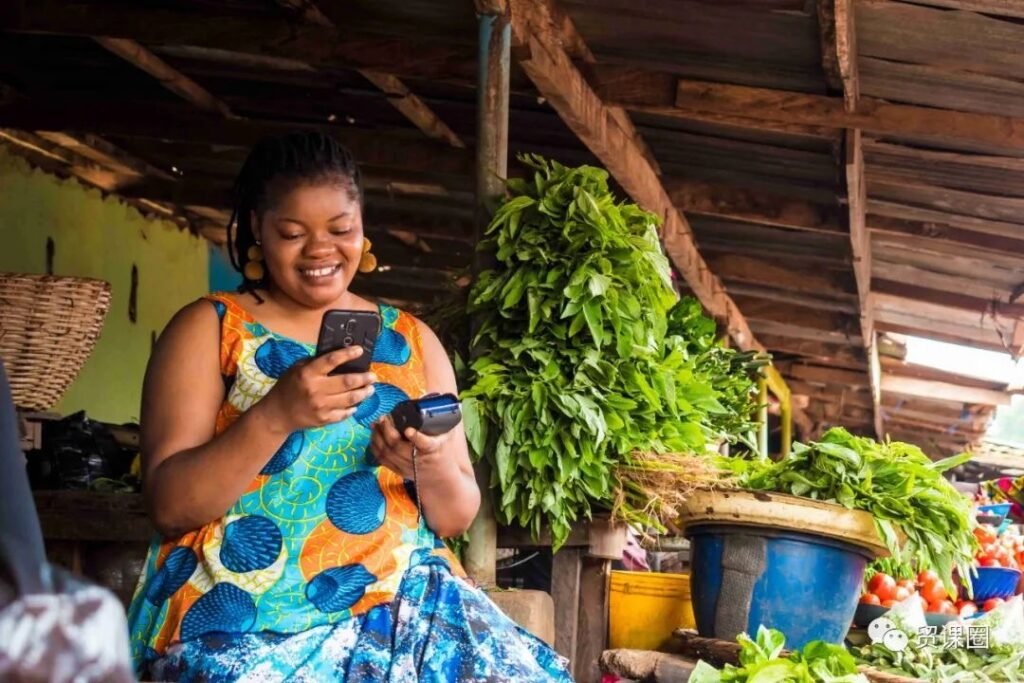
2. The scale of e-commerce will reach 75 billion US dollars
Africa has the youngest population structure in the world, with young people accounting for 70%. Therefore, its huge demographic dividend has also become an important reserve force for the short-term take-off of the e-commerce market in the region. The African E-Commerce White Paper jointly released by African technology companies TechCabal and Klasha shows that in 2022, there will be about 387 million e-commerce users in Africa, and the e-commerce penetration rate is 32%. It is estimated that by 2025, e-commerce users will exceed 500 million, and the penetration rate will The compound annual growth rate of e-commerce users is 17.9%. The market size of e-commerce in Africa was US$16 billion in 2017, and this figure will reach US$75 billion by 2025.
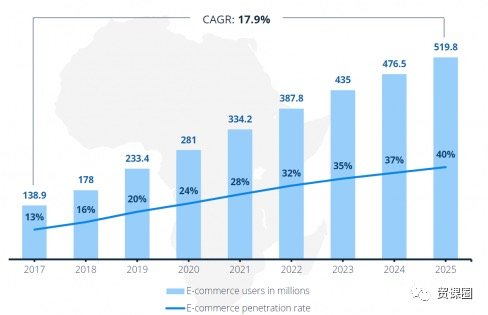
The growth trend of e-commerce users and e-commerce penetration in Africa, source: International Trade Administration
3. The development of e-commerce in Africa is uneven, and 5 countries occupy 80% of the market
Because the digital opportunity in Africa is extremely unevenly distributed, e-commerce business development in Africa is also unevenly distributed, with 10 countries accounting for 94% of the total transaction value.
According to the latest “B2C E-Commerce World Index” released by the United Nations Conference on Trade and Development (UNCTAD), the top 10 African countries are Mauritius, South Africa, Tunisia, Ghana, Libya, Nigeria, Kenya, Morocco, Senegal and Algeria. In terms of the number of digital markets, South Africa and Morocco both exceeded 100, followed by Tunisia, Egypt and Algeria respectively.
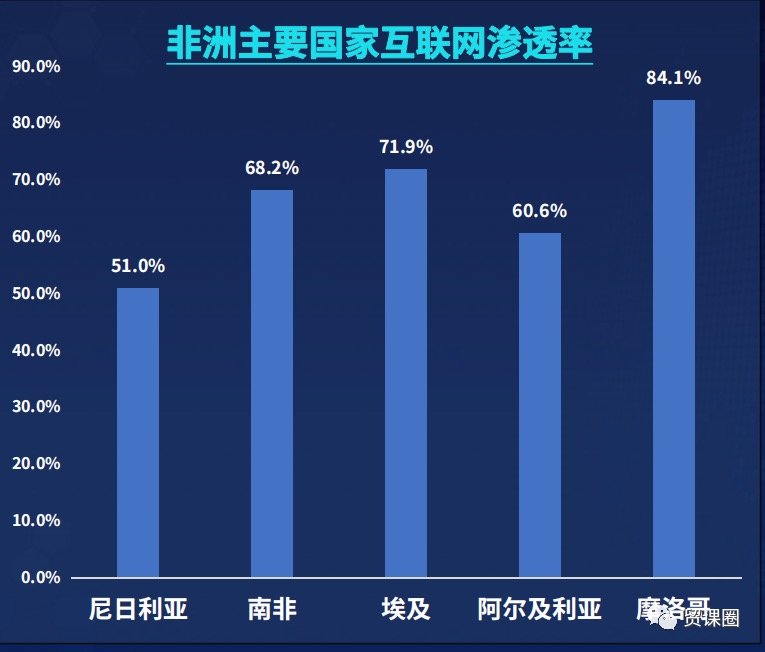
In terms of market size, Nigeria, Kenya, South Africa, Morocco and Egypt account for 78% of the total market. Nigeria is considered to be the largest e-commerce market in Africa, and Egypt will replace Kenya as one of the three countries with the largest contribution to the e-commerce market in Africa in 2020, and will usher in huge growth.
4. Portraits of e-commerce users in Africa
1) Age: Most e-commerce users in Africa are younger, and they are more interested in new technologies and equipment. Among them, people aged 25-34 account for as much as 31%.
2) Gender: The gender distribution of online shopping users in Africa is relatively even, with male users and female users both accounting for about 50%.
3) Comparison between urban and rural areas: Compared with rural areas, the proportion of online shoppers in African cities is higher, but this does not mean that e-commerce consumers in rural Africa can be ignored.
4) Income: Online shoppers in Africa are fairly evenly distributed across income brackets. Low- and middle-income groups account for 70% of online shoppers. Therefore, African consumers prefer high-quality and low-cost products, especially in clothing and footwear.
5) Online shopping category preferences of African users: African online shoppers prefer four major categories of products purchased online, namely electronic products (TVs, smart phones, etc.), shoes, clothing, books, videos and games.
3. African countries worth developing
1. Nigeria
The full name is the Federal Republic of Nigeria, with a land area of 923,768 square kilometers and a population of 213 million (2021). It is the most populous country in Africa. The official languages are English, Hausa, Yoruba and Igbo as the main tribal languages. Nigeria is the largest oil producer in Africa and the sixth largest oil exporter in the world. It is a member of international organizations such as the United Nations, the Non-Aligned Movement, the Group of 77, the World Trade Organization, the Organization of Petroleum Exporting Countries, the African Union, and the Economic Community of West African States. The largest economy in Africa.
According to the “London Economic Quarterly Review” in the first quarter of 2022, Nigeria’s GDP in 2021 will be US$440.1 billion, the per capita GDP will be US$2,062, and the GDP growth rate will be 3.6%.
2. Kenya
The full name of the Republic of Kenya is located in the east of Africa, with the equator running through the middle and the East African Rift Valley running through the north and south. Kenya is mainly suitable for animal husbandry, with a land area of 582,646 square kilometers and the capital Nairobi. The country is divided into 47 counties, with a population of 47.564 million (2019 census results), and a total of 44 ethnic groups.
According to the Doing Business report, Kenya is one of the best performing countries in the world in terms of credit and entrepreneurship. In 2020, Kenya’s GDP is 95.8 billion US dollars, and its per capita GDP is 1,782 US dollars. It is one of the countries with a better economic foundation in sub-Saharan Africa.
3. South Africa
The full name of the Republic of South Africa (The Republic of South Africa), with a land area of 1,219,090 square kilometers, is located at the southernmost tip of the African continent. According to the mid-2020 estimate by Statistics South Africa, the population of South Africa is 59.62 million, and there are 11 official languages, of which English and Afrikaans are the common languages. About 80% of South Africa’s population believes in Christianity, and the rest believe in primitive religions, Islam, Hinduism, etc.
As the second largest economy in Africa, South Africa has a well-established legal and financial structure and is one of the easiest places to do business on the continent. South Africa’s per capita living standard ranks among the best in Africa, its industrial system is the most complete in Africa, its deep mining technology ranks among the top in the world, and minerals are the main source of South Africa’s economy. Manufacturing, construction, energy and mining are the four major sectors of South African industry.
In 2020, affected by the new crown pneumonia epidemic and the “blockade” measures, South Africa’s economic situation encountered difficulties, and the economy contracted by 6.4% in 2020. In 2021, its GDP will be 419.784 billion US dollars, the per capita GDP will be 6996.4 US dollars, and the annual growth rate of GDP will be 4.9%.
4. Cameroon
The full name of the Republic of Cameroon (English: The Republic of Cameroon) is a unitary republic located in central and western Africa. Figure family and so on.
Cameroon plays an important role in the political and economic fields of Africa, especially sub-Saharan Africa. As a member of the Central African Economic and Monetary Community, Cameroon has a high economic proportion and is one of the political and economic powers in Central Africa. In 2021, Cameroon’s GDP will be US$44.48 billion, the per capita GDP will be US$1,635, and the economic growth rate will be 3.1%.
4. African market development strategy
1. Popular e-commerce categories in Africa
According to eMarketer data, the total revenue of e-commerce in Africa has been increasing year by year since 2017, and is expected to reach US$3.94 billion by 2025. The market size should not be underestimated.
At the same time, some hot-selling categories have achieved good results: fashion categories, electronics categories, and furniture and appliances respectively occupy the TOP3 positions of the best-selling categories. It can be seen that African consumers have a high demand for fashion. For example, clothing, shoes and boots, which are closely related to modern technological life, have strong demand for trams. At the same time, due to the lack of industrial technology in Africa and the dependence on imports of household appliances, problems such as single brand and high pricing have emerged. Therefore, e-commerce provides local consumers with more choices.

2. Category recommendation for development in Africa
Disclaimer: The following data comes from the Made in China platform and is for reference only.
electronic entertainment scene
In the electronic entertainment scene, buyers in the African market are involved in three major industries.
The target countries of this industry are – Popular countries are Nigeria, Ghana, South Africa, Zambia, Kenya, Morocco, Tunisia. They are 3C electronics, sports and fitness and entertainment, and toys.
5. Characteristics of African customers
1. Judging economic strength from accent
In Africa, we can infer the economic strength of customers based on their age and language purity. From the customer’s social platform to learn more about the customer’s information and life interests.
As we all know, many countries in Africa are colonies, so they all learn English and French. If the customer can only speak the local language, English and French are not good, then the economic strength is likely to be poor. Because children from relatively wealthy families in Africa generally study in noble schools from elementary school to middle school, and have a good environment for learning English and French.
2. Pay great attention to price
African customers pay special attention to price and pursue cost-effective products. They pay more attention to price rather than quality. African customers must leave room for price reduction when pricing, and explain to them that labor is very expensive, workmanship is very complicated, cost is relatively high, and the process takes a long time to affect the price. factor.
3. Enthusiastic and polite
Most African customers are enthusiastic and humorous, and like to call them brothers and sisters, so we can use some more intimate names to shorten the distance with customers, share some new and interesting things, interact more on a daily basis, and build a relationship of trust.
4. Long order cycle
Affected by the economy, many new buyers in Africa will often shop around. When comparing, they will be very entangled because they have no idea. As a result, many foreign traders will encounter African customers who have many inquiries in the early stage and are still hesitant when placing orders.
When encountering such African customers, we can approach them from the perspective of their empathy, so that the customer feels that we are not just doing business with him, but are helping him sincerely.
Customers who face many problems need to be aware that firstly, this customer is very willing to purchase, and secondly, to improve their own sense of competition (because the customer must also be negotiating with multiple suppliers). Therefore, we should promptly answer doubts, dispel concerns, and post multiple product or company videos/photos, or other customers’ installation conditions, purchase conditions, layout of the model room, factory assembly line, etc. When negotiating prices, you can set a time limit for preferential prices and urge them to make a decision.
6. How to make an order with African customers
1. Pay attention to time difference
Because of the time difference, most African clients negotiate in the afternoon, so we have decided which client we want to talk to, and we must prepare enough materials to negotiate every morning to improve our bargaining chips.
2. Establish trust relationship
Customers do a good job of follow-up and after-sales. Build a relationship of trust with customers, sometimes even if there is a product that is not produced by our factory, customers are willing to trust you.
3. Pay attention to the local language
Some African customers have a strong English accent. Therefore, if you have enough time and energy, you can learn some local languages, such as Swahili, according to your actual needs. This is a good way to get closer to them.
4. Understand relevant policies in advance
When placing an order in an African country, it is necessary to have a good understanding of the country’s import policy requirements, consult with the seniors in the company for precautions, and ask customers whether special certificates and qualifications are required, and make plans in advance for Take the stress out of shipping.
For example, for the goods sent to Cameroon, the customer needs a COC certificate for customs clearance. Some experienced foreign traders will first find SGS to do the test and issue the certificate. This test needs to provide the material size certificate of the product, as well as the manufacturer’s ISO9001 Certificates, etc., all of which need to be communicated with the manufacturer and SGS testing personnel, and at the same time, the delivery is completed with the cooperation of colleagues in the documentary shipping department.
———————
Well, the above is the introduction of the African market. Its development potential and gold mining opportunities are unique. However, there are always two sides to a coin. Huge opportunities are also accompanied by unpredictable challenges and fierce competition among peers.
Therefore, when we foreign traders look up at the starry sky, we must also look down at the road, make steady progress, make full preparations, integrate our own resources, and develop well.




